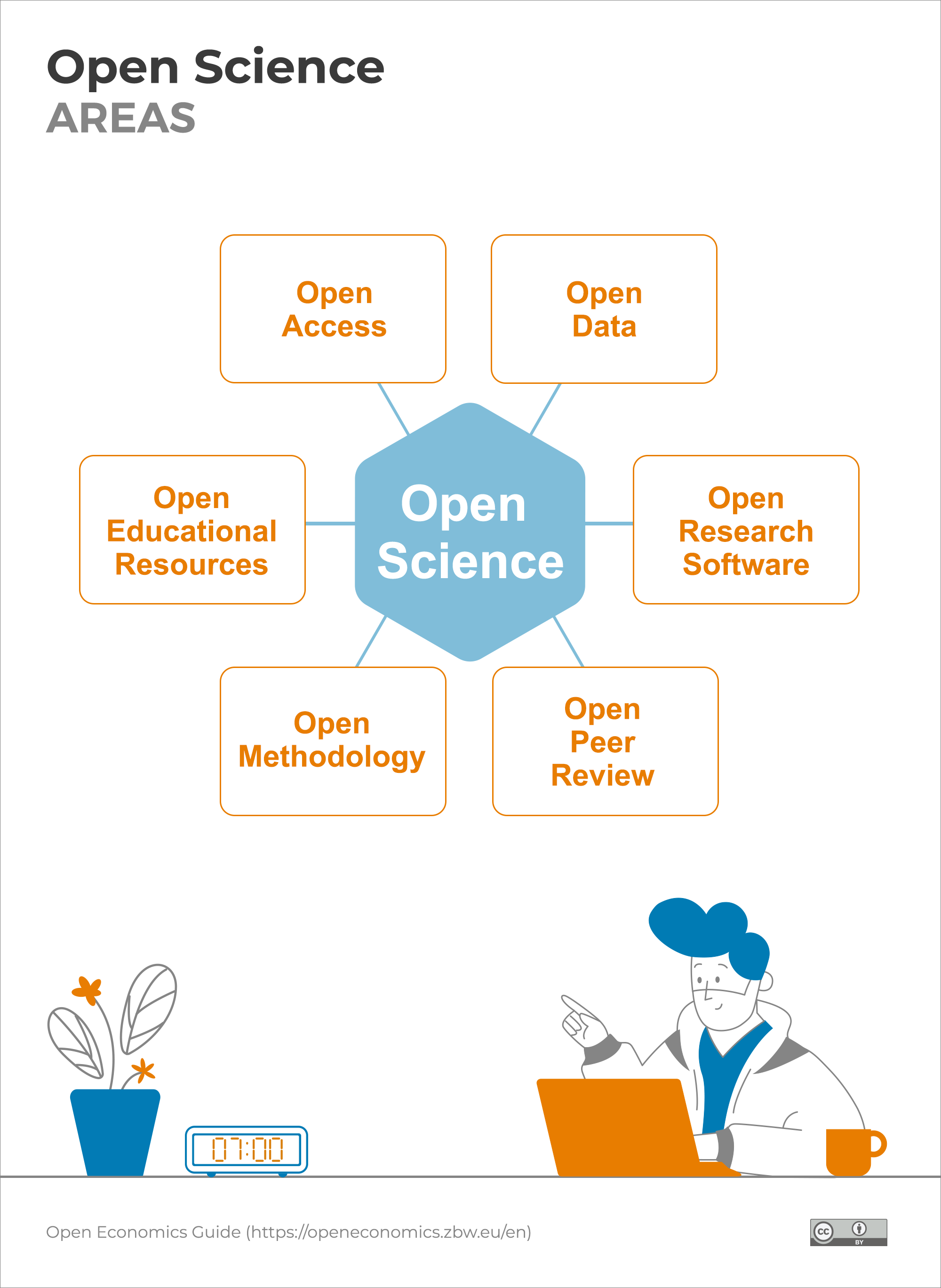How to use Open Science in Practice
Take a look at the six main fields of Open Science and consider which of these fields potentially have the greatest benefits for your scientific work. You can then use each of these fields either actively as a producer or passively as a consumer of Open Science for yourself:
- Open Access: Publish research results in an open way, and make them usable – or reusable – and accessible for each person
- Open Data: Make research data as public and reusable as possible and available for others to reuse
- Open Educational Resources: Using free and open materials for education and in teaching, and making them available yourself
- Open Methodology: Document or reuse the application of methods as well as the entire process behind them, if this is practicable and relevant
- Open Source: Use open source technologies (hardware and software) and open up – or reuse your own technologies
- Open Peer Review: Transparent and replicable quality assurance through Open Peer Review

Find out more about the different fields of Open Science and read our Tips for taking your first steps, which shows how you can use Open Science for your own benefits. Our Overview of Open Science tools, which is focused on research tasks, offers you a further opportunity for getting started in Open Science.
Also a good entry point: the Open Science Game of the Zurich University allows you to choose between open and traditional research practices and thus experience the differences.